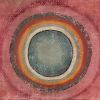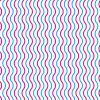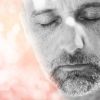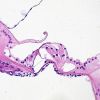
Sound has been an invisible force throughout history that permeates every aspect of our lives. Traffic noise, sirens, airplanes thundering overhead, and other jarring sounds jolt our nerves, while the sounds of nature and music flow over us and around us like soothing waters, lifting our spirit, inspiring us, exciting us. Yet if we could see sound, our world would be even more beautiful than nature has gifted us to see—a world filled with shimmering, holographic bubbles, and wherever a bubble meets a surface, an invisible kaleidoscopic pattern is imprinted.
If asked to visualize sound or music, we might imagine a wave undulating through the air, since we were taught in school that sound is a wave. However, while classical texts refer to sound and music travelling in waves, this model relates only to the graph of sound not to what we might refer to as sound’s physical ”space form.” In the real world, audible sounds travel through the air as bubbles. Sound bubbles pulsate in and out and it is the rhythmic movement of this pulsation that, when graphed, is depicted as a wave.
To see the sounds that create light and life is to open a new window on our world, one that has been veiled for all time. But revealing visible sound is not a new pursuit. Few will be surprised to learn that the first person to leave a written record of this work was none other than Leonardo da Vinci. In the late 1400’s, after observing how the dust motes on his worktable stirred to create shapes when he vibrated the table, he wrote, “I say that when a table is struck in different places the dust that is upon it is reduced to various shapes of mounds and tiny hillocks.” Da Vinci’s close observation of dust under the influence of vibration was, quite literally, sound made visible. Rather like sprinkling powder on a fingerprint to render it visible, a light sprinkling of particulate matter on any vibrating surface will reveal hidden sound patterns.
German musician and scientist, Ernst Chladni, (1756–1827) applied this simple physics principle with great flair. He made sand-strewn metal plates ring by playing their edges with a violin bow, creating beautiful sand patterns known today as “Chladni Figures.” Chladni became famous throughout Europe and even demonstrated this seemingly magical phenomenon to Napoleon. The French leader was so impressed he sponsored a competition with the Paris Academy of Sciences to acquire a mathematical explanation of the sound patterns. Sophie Germain (1776–1831), a young French woman, won Napoleon’s three-thousand-franc prize.
The person who made the largest contribution in the twentieth century was Hans Jenny (1904–1972), a Swiss medical doctor and scientist. Jenny published his first volume, Kymatic—a title derived from the Greek word kuma (“billow” or “wave”), a description of the periodic effects that sound and vibration have on matter—in 1967 and his second in 1972, the year he died. His two volumes are rich sources of imagery, which he observed and described in great detail, although leaving scientific and mathematical explanations to scientists who would come after him.
Today the science of visible sound—now termed cymatics, after Jenny’s work—offers insights into many fields of science, from astrophysics to zoology and almost every discipline in between. I have researched the subject intensively for twenty years. That work has led to the development of the CymaScope, a new instrument that renders sound visible by imprinting sound vibrations onto the surface and sub-surface of water, creating remarkable visuals.
To see the CymaScope in action and for further reading on this work and the scientific field of cymatics, visit cymascope.com.
About the Contributor
John Stuart Reid is an English acoustics engineer, scientist, and inventor. He has studied the world of sound for more than thirty years and speaks extensively on his research findings to audiences throughout the United States and the United Kingdom. Inventor of the CymaScope Pro, a tool for visualizing sound, his primary interests lie in investigating sound as a formative force and discovering why sound heals.












It was great. I love science.